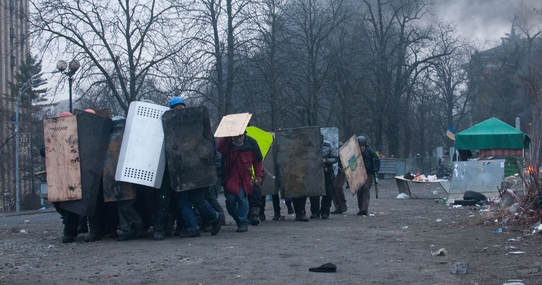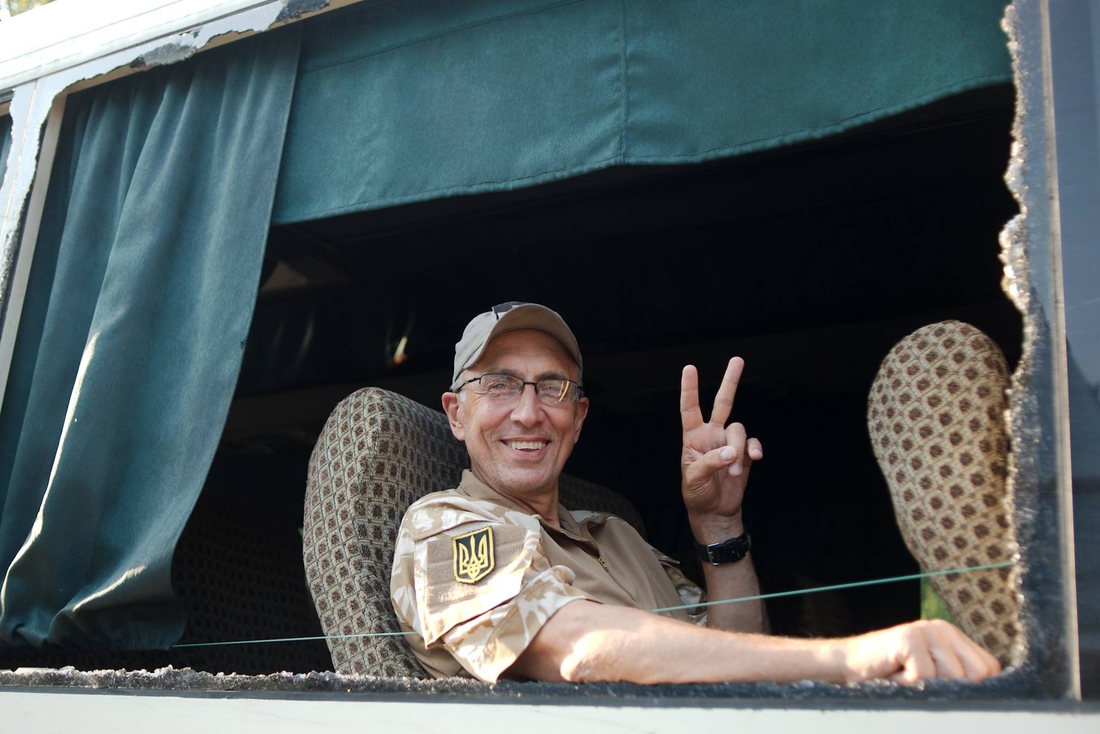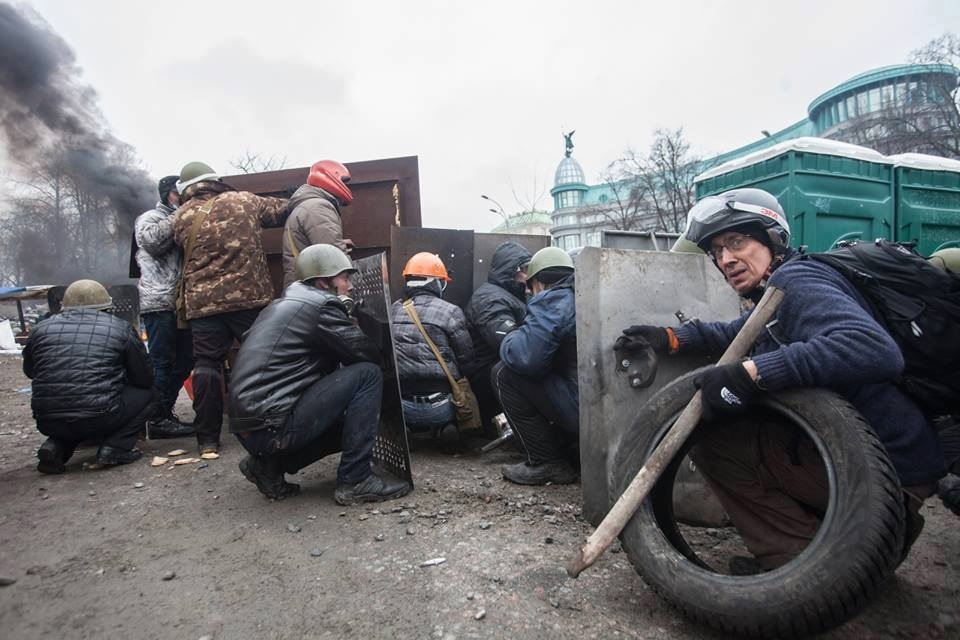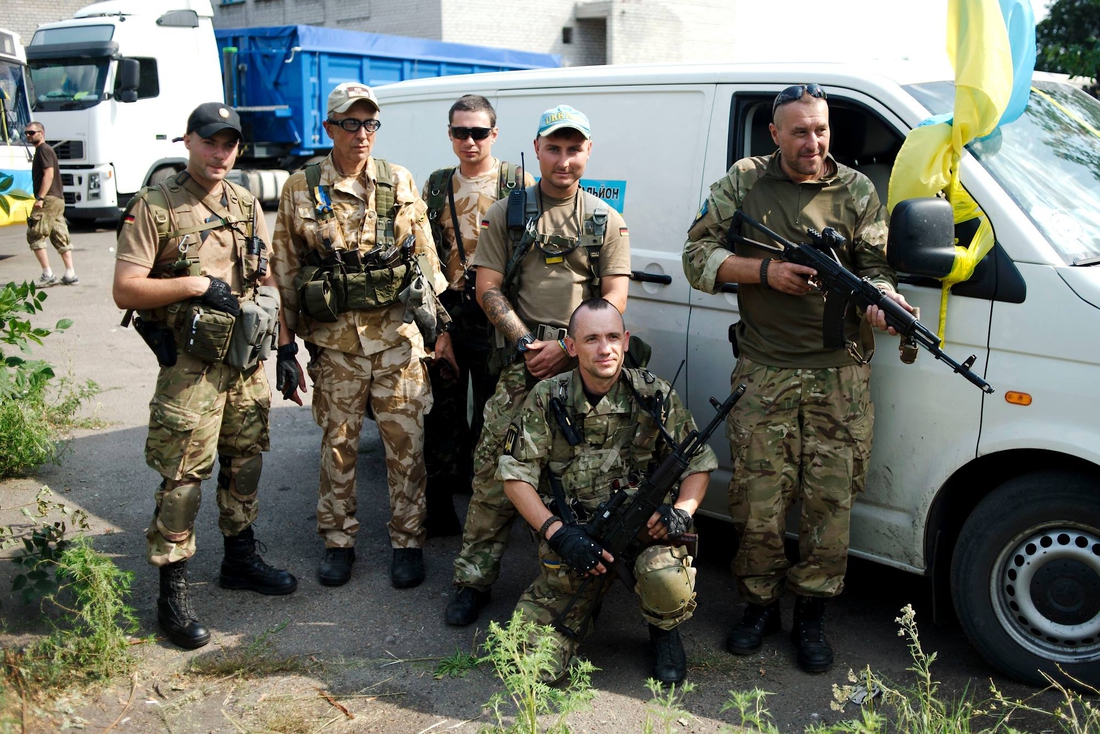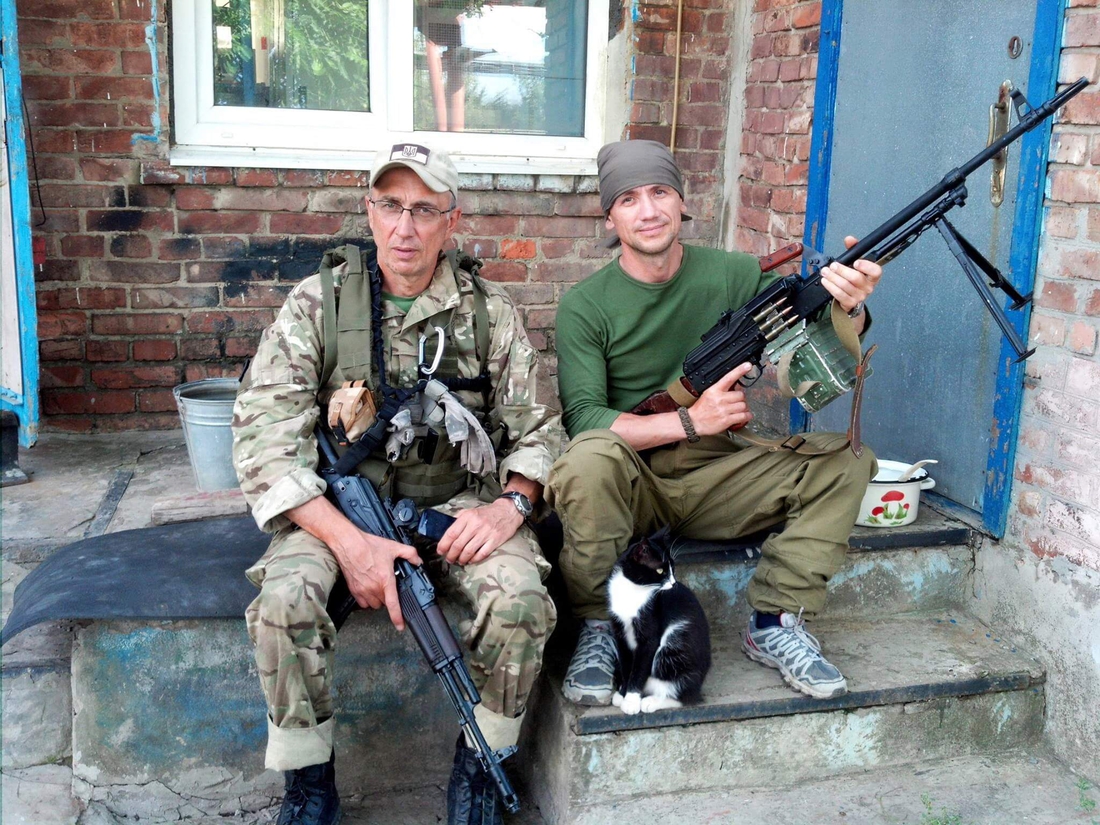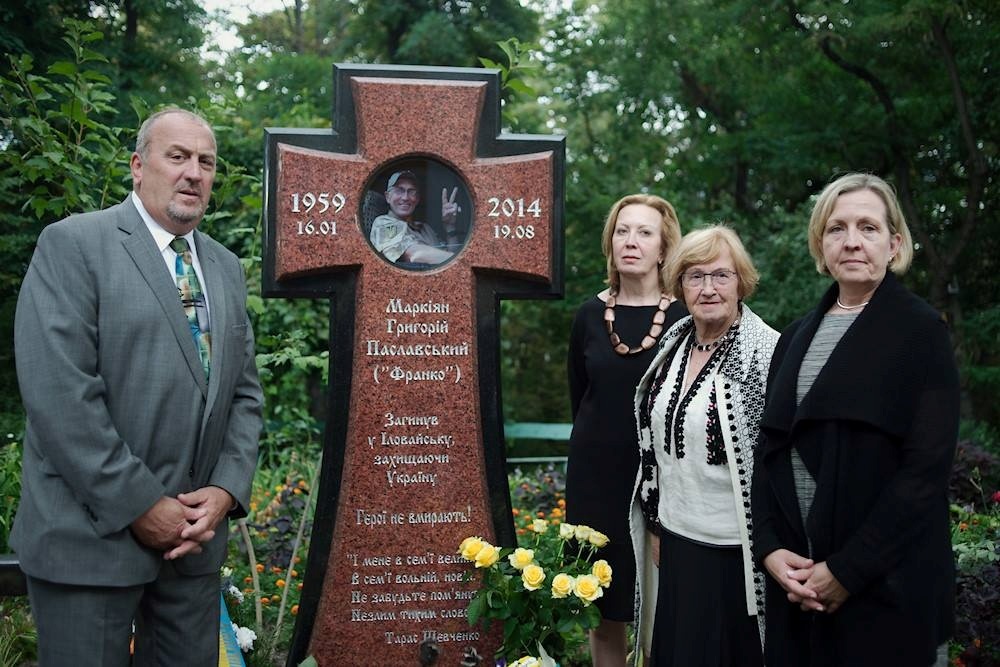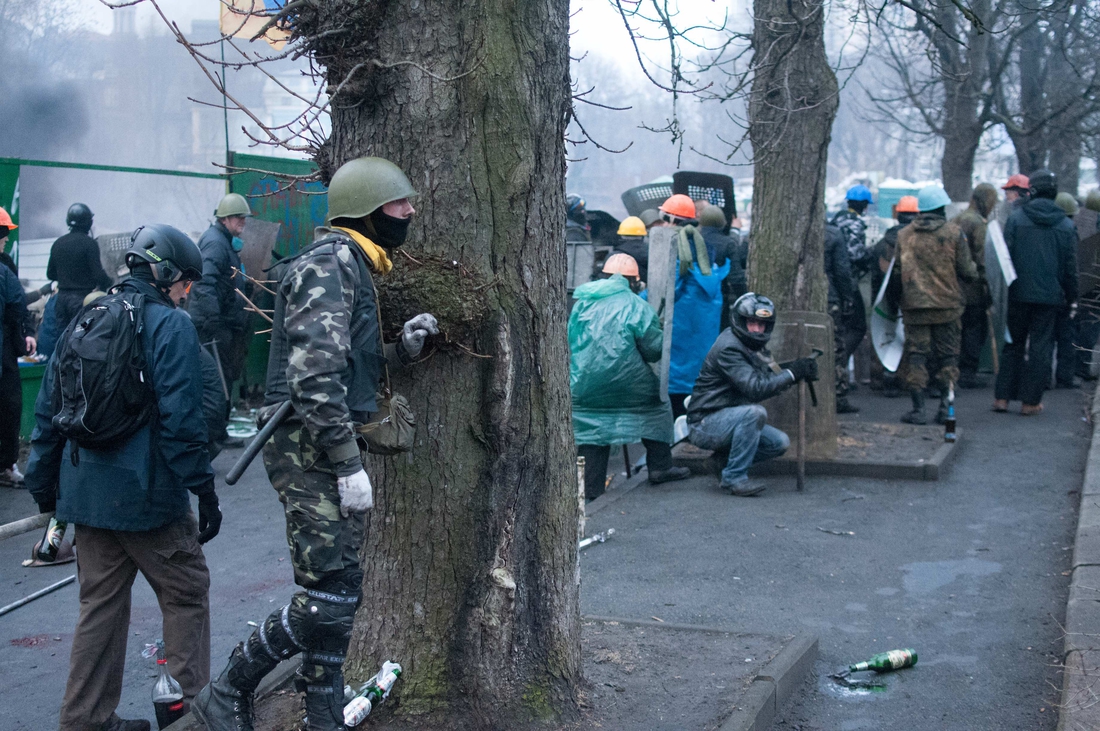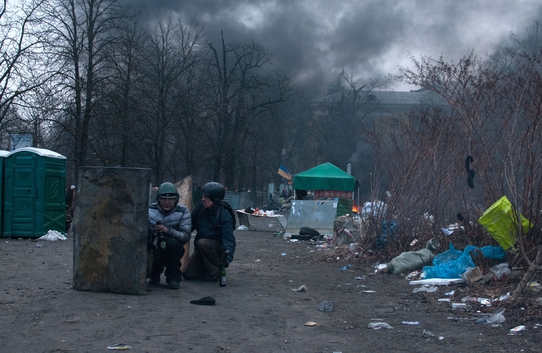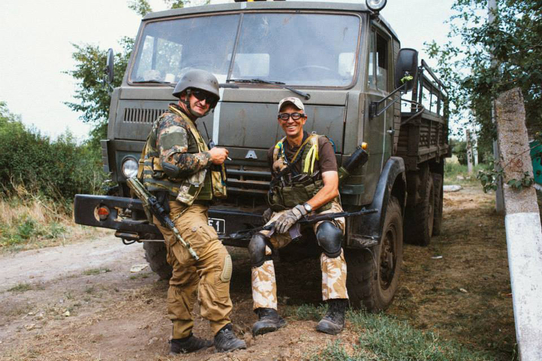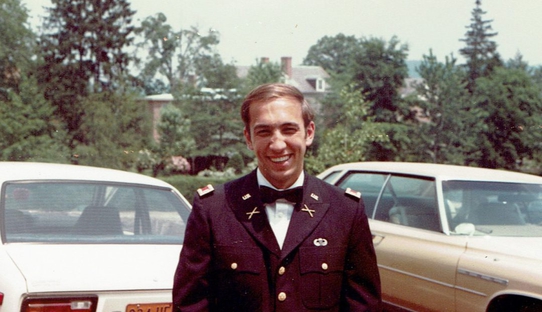Markiyan (Mark) Gregory Paslawsky
The story of an American who fought and died for Ukraine.
Olena Chebeliuk
Markiyan Gregory Paslawsky was born in New York on January 16, 1959. To escape Soviet persecution, his family fled Ukraine during World War II.
Mark’s father, Osyp Paslawsky, came from a family of a Greek Catholic priest in the village of Popeli, Lviv Oblast. His mother, Orysia Hunczak, was born in 1930 in the village of Stare Misto, Pidhayetsk Raion, Ternopil Oblast.
Markiyan’s parents met in New York and were married at St. George Ukrainian Catholic Church in 1954. The Paslawsky family had four children: older brother Nestor, sisters Iryna and Olena, and Markiyan.
Markiyan’s uncle is the prominent Ukrainian historian Taras Hunczak.
As a child, Markiyan attended St. John the Baptist Ukrainian parish school in Newark, and was a member of Plast Scouting Organization. In 1973-1977, he attended Vailsburg High School. He excelled in volleyball, which enabled him to earn a scholarship to West Point, the prestigious American military academy. He graduated in 1981 with a degree in engineering.
For the next five years, Markiyan served in the U.S. Army, first at Fort Sill, Oklahoma. Later, he studied Turkish at the Defence Language Institute in Monterrey, California. From 1983 to 1984, he was stationed at American military bases in Turkey, then at Fort Dix in New Jersey. He retired from active duty as captain in 1986.
From 1985 to 1986, Markiyan studied at Monmouth University and graduated with a Master’s Degree in Business Administration. He worked as an investment banker at different financial firms, namely Bear Stearns.
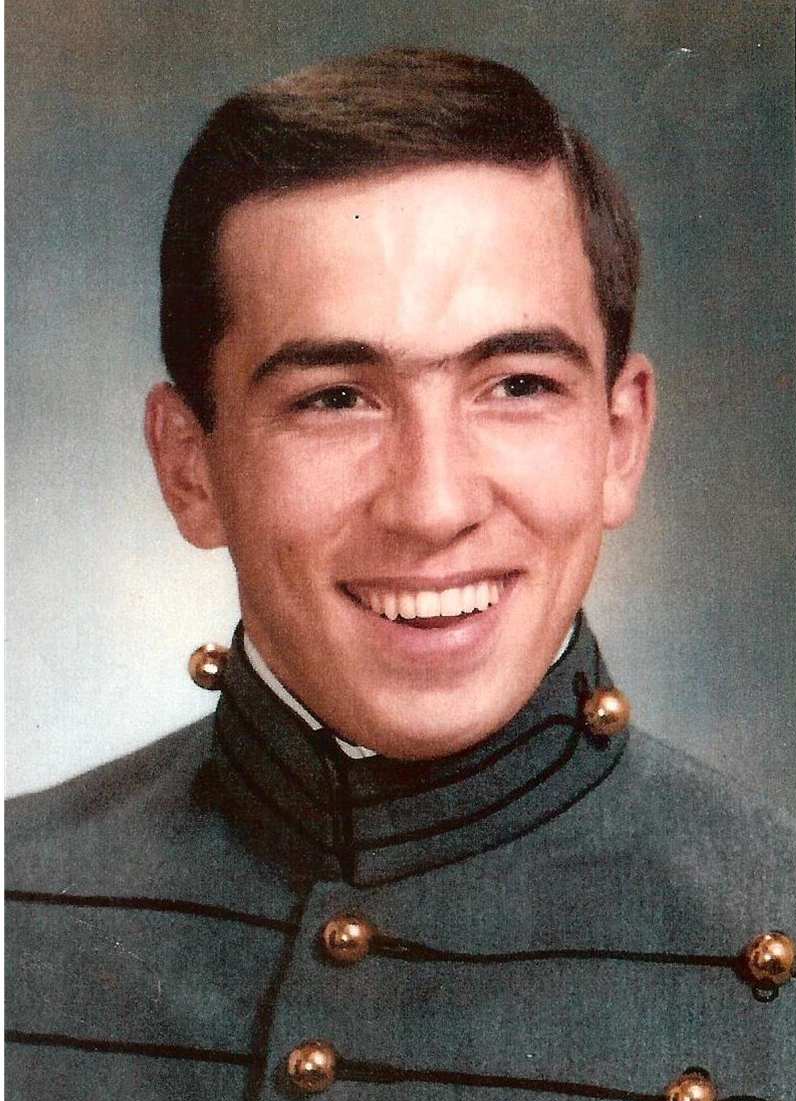
Mark Gregory Paslawsky, graduate of West Point Military Academy.

Mark Paslawsky with his parents at the West Point graduation ceremony, 1981.
Markiyan’s initial visit to the USSR in 1991 was followed by frequent trips to Ukraine. As of the late 1990s, he lived mainly in Ukraine. He worked in the banking sector and as an export consultant to different Mariupol metal companies. In Kyiv Oblast, he founded the Rusava-K - agricultural company, which became one of the most profitable enterprises in the region. Thanks to his hard work and strong business acumen, it did not take long for Markiyan to become a millionaire.
Sam Hartwell, Mark’s good friend from West Point and later business associate in Ukraine, remembers:
“Mark was interested in history and international relations; he read a lot of scholarly literature. We often discussed military and world history, talked endlessly about Russia’s power politics, and American-Russian confrontations. Mark was a very knowledgeable, intelligent guy. He was extremely honest, despised dishonesty, especially in politics, be it in Ukraine, Russia, or the United States. We discussed these topics a lot.”
After Markiyan’s death, his family discovered a trove of documents and files on his computer outlining his thoughts and ideas on how to change Ukraine and promote its development and modernization in all possible areas - economics, banking, politics, education, and the army. These documents, entitled Call to Action: The Words of Markiyan Paslawsky were published by the National Museum of the Revolution of Dignity. They can be viewed and downloaded on the museum’s website.
His colleague, Oleksiy Soroka, warmly remembers Markiyan, who later adopted the call sign “Franko”:
“Mark had a great sense of humour. He was a charismatic person, possessing wisdom, self-irony, humour and warmth. In fact, Mark had an extraordinarily warm personality, consciously and subconsciously attracting many different people to him. Just look at Mark’s smile in one of his last photos, where he’s already at the front...
What prompted Mark to leave his comfortable office and go to fight on the front lines? Only he could answer this question. In knowing Mark and reading his interview, I think it was a combination of several emotional factors – an acute sense of injustice due to Russia’s aggressive actions that Ukraine is currently experiencing, the desire to redress injustice, Ukrainian patriotism, which was deeply embedded in his genes, and finally, the desire to protect younger and less experienced fellow soldiers in military affairs. He sincerely wanted to help Ukraine and Ukrainians achieve freedom and build a better tomorrow!
Mark had a sharp and critical mind and understood modern Ukraine very well from the inside. I sometimes disapproved of his criticism of Ukrainian politics in the 1990s. But, he was right and I was wrong! Eventually, years later, the Orange Revolution and the Revolution of Dignity proved that Ukrainians wanted to change and reboot the system. Mark was an active participant in the Maidan protests; they made a deep impression on him and, like many other activists, they inspired him to defend the ideals of the Maidan. However, unlike many, Mark was willing to do more… he was ready to risk his life.
Mark greatly valued his own freedom and independence, so it makes perfect sense that he gave his life for the freedom and independence of Ukraine”.
Markiyan Paslawsky took part in the 2004 Orange Revolution and actively supported the anti-government protests during Euromaidan in 2014. During the bloody events of February 20, 2014, Mark was on the front line of the Maidan. Two years after his death, he was identified in photographs that were taken on Instytutska Street in Kyiv. These photos were first published on Facebook Maidan February 18-20. How it really was.
“Armed” with a tyre, a Molotov cocktail and a long wooden baton, Mark and his comrades boldly advanced from the Zhovtnevy Palace on the left flank in order to gain a foothold at the top of Instytutska Street.
When Russia invaded Crimea and eastern Ukraine, Mark joined the National Guard as a volunteer. He received Ukrainian citizenship in April 2014. In June, he trained at the military training grounds in Novy Petrivtsi, and on June 23, he took the oath of allegiance and went to war. He took the call sign “Franko” in tribute to the Ukrainian poet Ivan Franko and fought with the Donbas Battalion.
His relatives in the U.S. learned that Mark had enlisted from his Twitter feed. Despite his rank as an officer, Mark joined the battalion as an ordinary private.
His comrade-in-arms Lev recalls:
“Yes, it’s true. He himself wanted to serve as an ordinary soldier. He didn’t want to stand out. But, it’s difficult for people like “Franko” not to stand out. He was a very colourful figure in our battalion. First, he was 55 years old. Second, he was a foreigner, even though he carried a Ukrainian passport. Third, you can’t imagine how juicily he could swear in Ukrainian! Well, Mark often told me that he wanted to be an ordinary soldier. Whenever he praised someone, he would say: “You’re real soldier!”
After each battle, Mark assembled all his comrades together for a so-called debriefing. He explained that debriefings were standard practice in the American military. Our fighters always listened carefully to his advice. Not only did he examine each and every aspect of the battle, but he also analyzed details closely. Why was our soldier killed in this situation? Why wasn’t it possible to liberate this village? He was familiar with everything, even how many machine gun magazines we should carry into battle… so that there would be enough ammo and we could move around quickly. And then, after the debriefing, he treated everyone to toffee sticks. You know, Mark loved sweets and loved to share treats with everyone.
Mark was about to go home on leave. He told us: “Let’s liberate Ilovaisk quickly and then I’ll go home, to the States, for a month! I haven’t seen my mother for such a long time!”
Mark Paslawsky used his own money to purchase military equipment and food products for the battalion.
Artemivsk, Popasna, Lysychansk, Pervomaisk, Kurakhove, Maryinka - this was the war path followed by Ukrainian-American volunteer Mark Paslawsky. His brother-in-arms Vadym Haidin recalls:
“Franko was granted one small privilege. He was allowed to choose a position during a combat mission… and it was always in the most dangerous area”.
Mark chronicled the war in detail on his Twitter account, which he held under the username bruce springnote, in honour of his favourite singer Bruce Springsteen, whose concerts he attended regularly in Europe and the United States.
Two weeks before his death, Mark Paslawsky gave an interview to American journalist Simon Ostrovsky:
“All the problems lead back to Kyiv. Many people, including politicians, believe that life will continue as it has for the past 20 years. But, any soldier here in the Donbas will tell you that will not happen!
I think that only 25 percent of the guys fighting here with me have military experience. Otherwise, it’s guys from the entire spectrum of Ukrainian society… It’s simply people that are patriots, and have had enough.
If you ask me whether I’m willing to die for Ukraine, I will answer that yes, I’m ready for it!”
Since the beginning of August 2014, the Donbas Battalion was at the heart of the bloody battles for Ilovaisk. This city was of strategic importance: the liberation of Ilovaisk meant cutting off enemy supply lines and destroying their front lines. Following a second assault on August 18, the Donbas Battalion and other volunteer units managed to liberate part of the city. The Ukrainian military took up positions at the local school.
On August 19, the Donbas fighters were ordered to cross the pedestrian bridge located over the railroad tracks, make their way towards the Ilovaisk City Council and occupy the building. Military reinforcements were expected from the Azov and Shakhtarsk Battalions. Mark was not part of the assault group. He and several other soldiers fell into an ambush near the bridge that they had been ordered to defend against Russian-backed militants who might attempt to cross the railway or hinder the Ukrainian operation.
The assault group could have completed its mission successfully, but the situation took an unexpected turn: according to Donbas commander Ihor Chaikivsky, the Azov and Shakhtarsk Battalions did not arrive in time, so the assault group was forced to retreat.
“Our unit was covering the retreat of the assault group. We wanted the enemy to direct their fire towards us,” writes Vadym Haidin, call sign “Maister”, on his FB page.
The Russian mercenaries encircling the Ukrainian fighters, including “Franko”, started firing from grenade launchers. One of the grenades fired from an enemy AGS-17 exploded over the soldiers’ heads. Mark Paslawsky, who was taller than his comrade “Maister”, actually shielded him partially from the explosion. Vadym Haidin was wounded in the eye and head, while “Franko” took a direct hit to the lungs.
The wounded soldiers were evacuated to School No.14, where the Ukrainian battalion was stationed. Several paramedics worked tirelessly around the clock to treat the wounded, but critical medical assistance was sorely lacking. Only one thing could save Mark’s life - he had to be immediately evacuated and undergo complicated surgery, which could only be performed by a qualified surgeon. With each passing moment, it became harder and harder for him to breathe.
“I remember him sitting on his knees, swaying back and forth, holding his chest and saying that he was in great pain,” said Commander Ihor Chaikivsky.
His comrades claim that just before his death, Mark looked up and said: “I dreamt of becoming a real Ukrainian. I hope I’ll become just that. It hurts so much and I really don’t want to die!”
Markiyan Paslawsky was buried on August 26, 2014 at Askold’s Grave in Kyiv.
He was awarded the Order of Danylo Halytsky (posthumously) and the non-state award National Hero of Ukraine.
Eternal memory!
Glory to the Hero!
Afterword
In May 2019, Prosecutor General Yuriy Lutsenko announced that the Prosecutor’s Office had opened a criminal case and was conducting proceedings on the raider attack of the Rusava-K agricultural company, whose founder and owner of 97.21% of shares was Markiyan Paslawsky. Notices of suspicion were filed against three persons, including Vitaliy Karliuk, deputy of the Kyiv Regional Council from the Poroshenko Bloc.
During the pre-trial investigation, it was established that a group of people, taking advantage of Mark’s tragic death in the war zone, “organized the documentation, registration, signing and registration of forged transactions using forged documents, thus enabling them to illegally gain ownership of PJSC Rusava-K” (website of the Ivano-Frankivsk Regional Prosecutor’s Office, which is investigating the case).
The new owners of the agricultural complex forged the minutes of the general meeting of shareholders, and managed to remove Mark Paslawsky from the list of company founders. The agreement for the sale and purchase of the authorized share capital of Rusava-K was finalized and signed AFTER Mark Paslawsky’s death (volunteer Nazar Prykhodko on Facebook).
We express our sincere gratitude to the family of Markiyan Paslawsky for the photos provided from their family archive and assistance in clarifying biographical data.
Translated by Christine Eliashevsky-Chraibi.
Edited by Lydia Eliashevsky-Replansky.
If you wish to reprint this article, please indicate the author and provide a link to the original source - Maidan Digital Archive. Please insert the link not lower than the third paragraph of the article.
